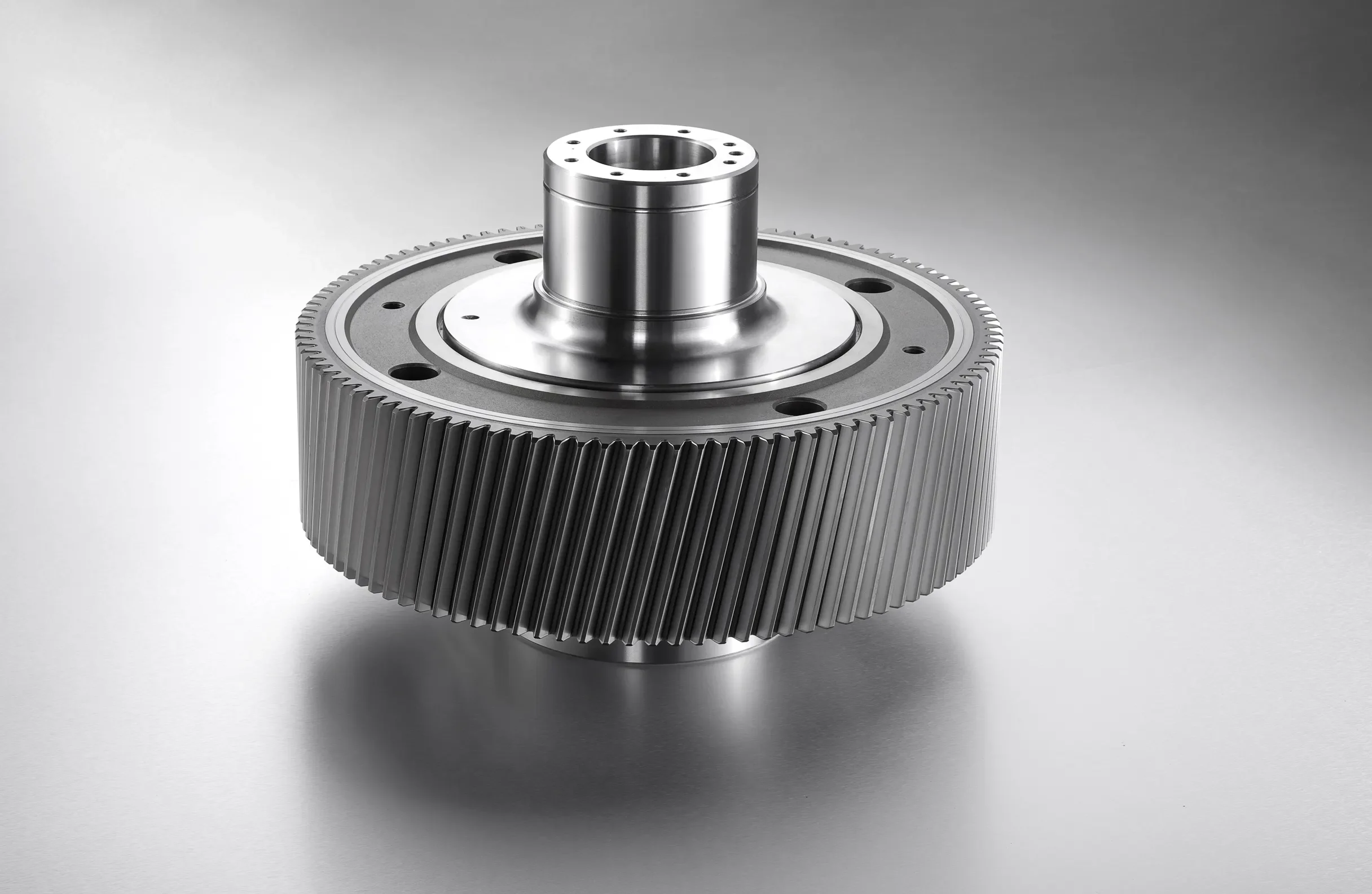- This topic is empty.
-
AuthorPosts
-
2025-04-10 at 5:01 pm #6223
Wind power has emerged as a primary player in the global effort to transition to renewable energy sources. With its substantial potential to reduce carbon emissions and provide clean electricity, wind energy has been integrated into the power grids of many countries. At the heart of this technology are wind turbines, which convert wind energy into electrical power. One of the most crucial components in this conversion process is the wind power output gear. This article Tianshan explores the role of the wind power output gear and key considerations for designing it that contribute to the efficiency and reliability of wind turbine operations.

The Role of Wind Power Output Gear
Wind turbines operate by converting the kinetic energy of wind into mechanical energy using the rotor. The rotor turns a shaft, which transmits mechanical energy to the gearbox, including the wind power output gear, which plays an integral role in the turbine's overall performance. The output gear's primary function is to convert the mechanical energy generated by the rotor into an appropriate speed and torque for the generator. In essence, it steps up or steps down the rotational speed from the rotor to match the operational requirements of the generator.
The wind power output gear works by taking low-speed rotation from the turbine's rotor and increasing it to a higher speed suitable for the generator. This is a crucial function because the generator requires a constant, optimized rotational speed to produce electricity efficiently. Without the output gear, the generator would not receive the appropriate input, resulting in inefficiency and potential damage to the turbine's components.
The smooth operation of the output gear is fundamental to the turbine's performance, as any malfunction can lead to significant losses in energy efficiency and reliability. With the output gear responsible for transmitting mechanical power, it must be designed to handle high torque loads, reduce friction, and work reliably under diverse wind conditions.
Key Considerations for Designing Wind Power Output Gears
Designing an efficient wind power output gear system is a complex process that requires careful consideration of various factors. These include material selection, load capacity, lubrication, and the specific operational conditions in which the wind turbine will be operating. Below are some of the most important aspects to consider during the design phase.
Material Selection
The materials used in the construction of wind power output gears must possess certain qualities that ensure durability and resistance to wear. Gears are exposed to constant mechanical stress, and they must be made from materials that can withstand these forces over extended periods. Steel alloys are commonly used because of their high strength, hardness, and wear resistance. Additionally, certain alloys may be treated with special coatings, such as nickel or chromium, to improve their resistance to corrosion and fatigue. Advanced materials, such as composite materials or high-strength titanium, are also being explored for wind turbine gears. These materials can offer additional benefits in terms of weight reduction and strength, allowing for more compact and lightweight gear systems without compromising performance.
Lubrication and Cooling
Lubrication is essential for minimizing friction between the teeth of the gears, preventing heat buildup, and reducing wear over time. Wind power output gears are designed with advanced lubrication systems that provide a continuous flow of oil or grease to keep the components running smoothly. These lubricants must be formulated to withstand extreme temperatures and the mechanical stresses that occur in the gear system. Cooling systems are also an essential component of wind turbine gearboxes. As the gears operate, they generate heat, and excessive temperatures can lead to overheating and premature failure. Cooling mechanisms, such as oil cooling systems, ensure that the gear mechanism operates within optimal temperature ranges, thereby maintaining efficiency and preventing damage.
Precision and Manufacturing Quality
The precision with which the gears are manufactured directly impacts the efficiency of the system. Even small misalignments or defects in the gear teeth can lead to inefficiencies, such as increased friction or noise, which reduces the overall performance of the wind turbine. Advanced manufacturing processes, such as CNC machining and high-precision gear-cutting techniques, are used to ensure that each wind power output gear is precisely shaped and aligned. High-quality manufacturing minimizes wear and tear, reduces operational downtime, and enhances the reliability of the gear system.
Noise Reduction
Wind turbines are designed to operate in rural and offshore locations, where noise levels can be a concern. As gears move, they generate sound, and if not properly designed, wind power output gears can contribute to high levels of noise pollution. Engineers design gear systems to minimize noise, which includes optimizing the shape of the gear teeth, using noise-dampening materials, and employing advanced lubrication systems that reduce friction and vibrations. Noise reduction technologies are an important aspect of modern wind turbine design, particularly in locations where noise regulations must be followed.
Load Capacity
Wind turbines experience varying levels of mechanical stress depending on wind speed. A well-designed wind power output gear must be capable of handling these fluctuating loads. Gears should be able to operate efficiently across a broad range of wind conditions without failure. Ensuring the gear system can handle these loads effectively helps prevent overloading, which can result in gear failure or the need for costly repairs.
In conclusion, wind power output gears are fundamental to the performance and efficiency of wind turbines. As the wind energy industry continues to grow, the advancements in gear technology will play a crucial role in maximizing the potential of wind power. With ongoing innovation and optimization, the future of wind power output gears looks promising, contributing significantly to the global effort to transition towards renewable energy solutions.
https://www.tianshangear.com/Wind-Power-Output-Gear-Enhancing-Wind-Energy-Performance.html
https://www.tianshangear.com/Wind-power-gear-1-5MW-16MW.html
http://www.tianshangear.com
Changzhou Tianshan Heavy Industry Machinery Co., Ltd. -
AuthorPosts
- You must be logged in to reply to this topic.
